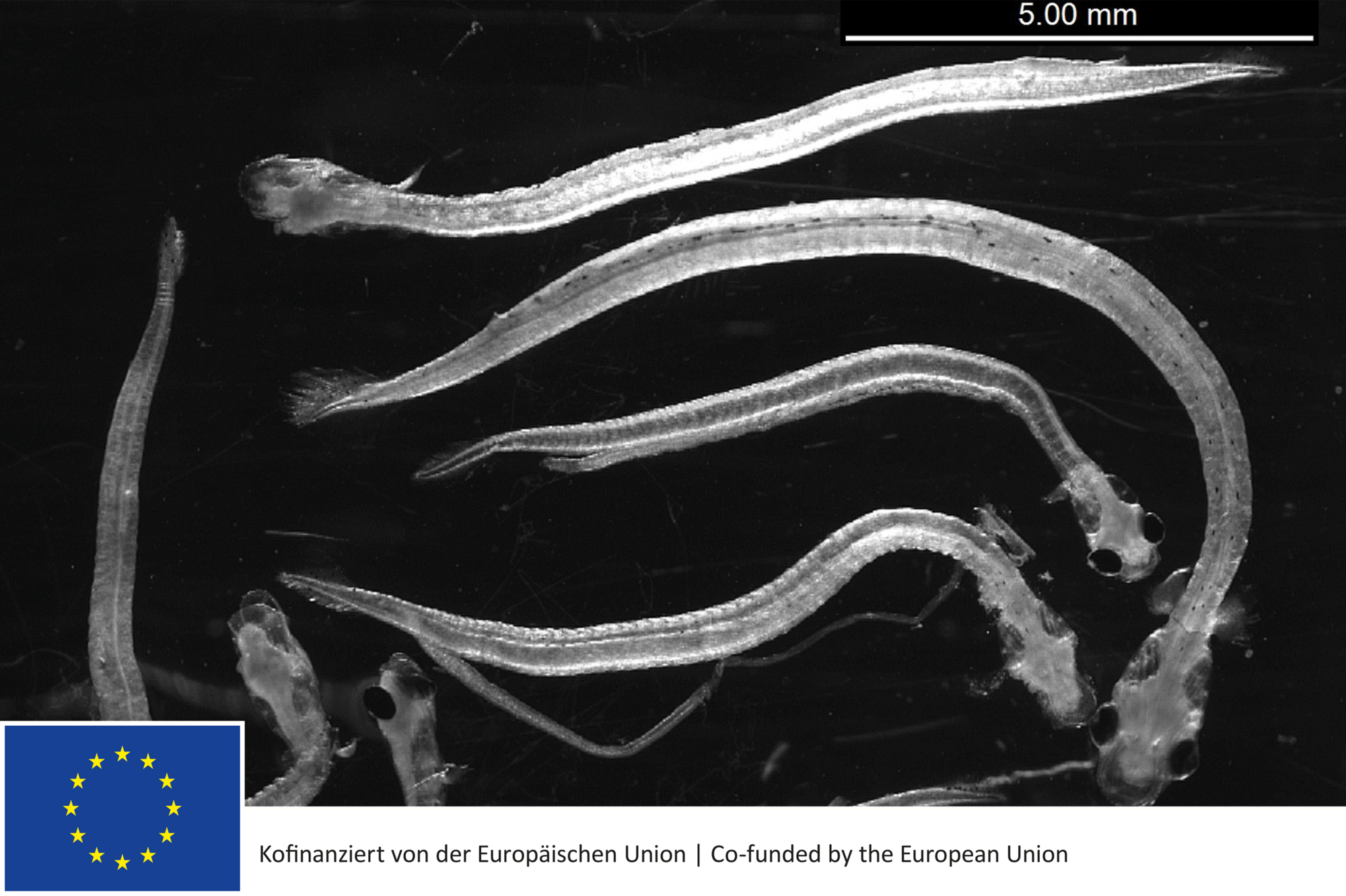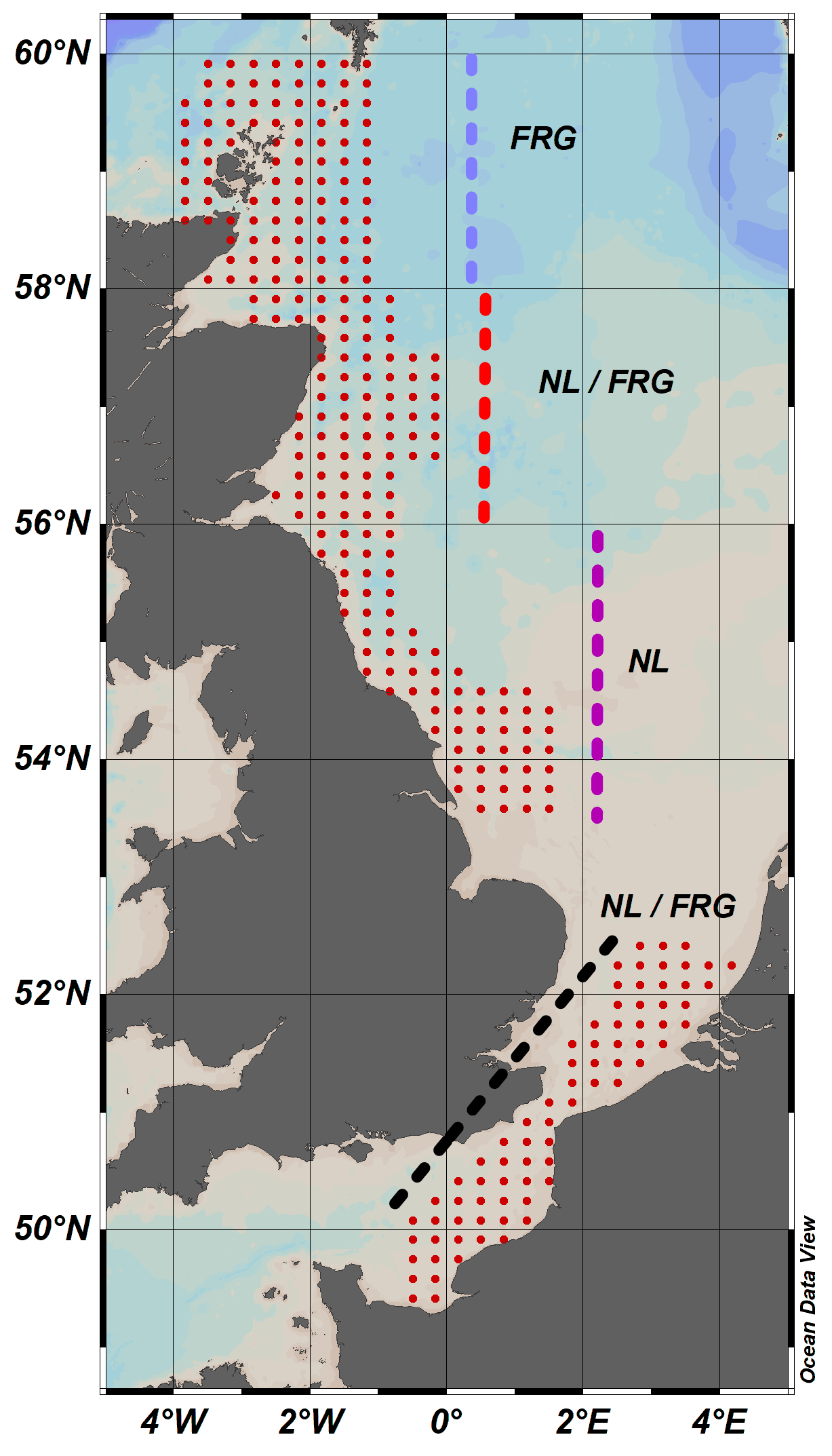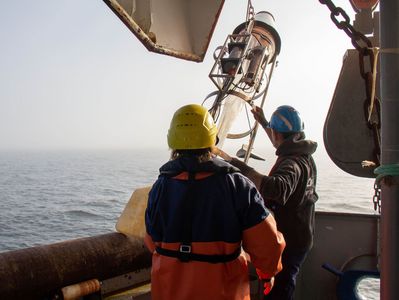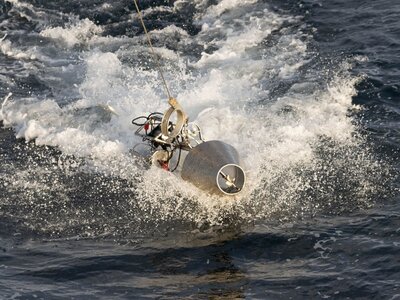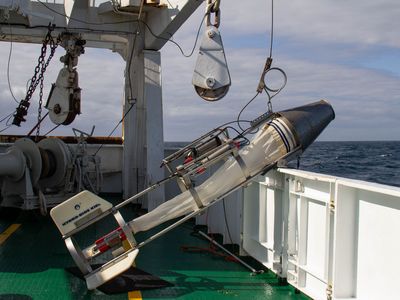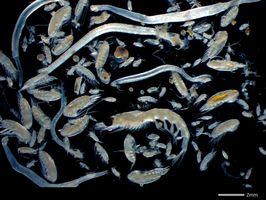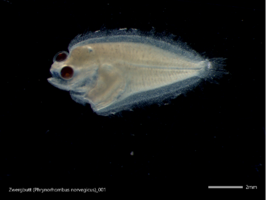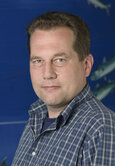What is the annual abundance of herring larvae? The Thünen Institute of Sea Fisheries investigates this question with regular research cruises. The number of herring larvae caught allows us, for example, to estimate the biomass of the autumn spawning North Sea herring and to identify possible changes in its spawning grounds.
Background and objectives
Herring is one of the most important commercial fish species, including for the North Sea fisheries. Its management must be sustainable in order to protect the resource for future generations. A good knowledge of the stock structure is essential for optimal management, as this is the only way to prevent over-exploitation or under-exploitation of the stock.
The objective of the International Herring Larval Survey (IHLS) is therefore to assess the herring stock throughout the North Sea by recording the abundance and distribution of herring larvae in the North Sea spawning grounds during annual research cruises. As the number of newly hatched herring larvae is related to the number of parents that have participated in the spawning activities, we can gain important information about the size of the spawning stock (parental biomass).
Research on the abundance of herring larvae has a long tradition in the North Sea. Larval survey programmes to determine the abundance and reproductive success of herring have been carried out since the beginning of the 20th century, but were initially limited to the southern North Sea.
In its current set-up, the IHLS has been carried out since 1972 and is coordinated by the International Council for the Exploration of the Sea (ICES).
Currently, the Netherlands and Germany participate in the research, with two areas of the herring larval stations being sampled by each nation, and the other two areas being shared or covered in turn. Due to the prevailing weather conditions, larger research vessels are usually used, such as the fisheries research vessel "Walther Herwig III" and the research vessel "Tridens".
As a contribution to the International Herring Larval Survey (IHLS), we compile the collected data on the occurrence of herring larvae in the North Sea for Germany within the EU Data Collection Framework (DCF). The results are used within ICES for the calculation of scientific catch quota recommendations.
Approach
The spawning season for North Sea herring begins in early September near the Orkney Islands and continues southwards well into October. For example, the so-called downsherring - one of the major subpopulations of North Sea herring - spawns in the English Channel in December and January. The survey is planned and carried out around these spawning seasons and therefore takes place in autumn and winter.
We use a plankton catching device, a modified 'GULF III' sampler, which is towed sideways or behind the research vessel. At each station, the 'GULF III' is towed through the entire water column - from the surface to just above the bottom of the sea and back again.
Inside the 'GULF III' is a fine-mesh net that filters out fish larvae and other plankton organisms from the water flowing through it.
All the fish larvae are then sorted from the catch to identify the species and the herring larvae, which are then measured and counted. The number of newly hatched herring larvae can be used to estimate the biomass of the parents.
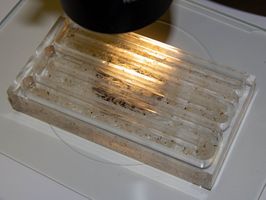
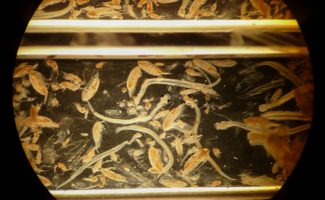
These surveys monitor the annual length distribution of herring larvae as well as their distribution and abundance in the main spawning areas of the North Sea - e.g. the Orkney/Shetland area, the Buchan area, the central North Sea and the southern North Sea. All relevant data on herring larvae, together with basic hydrographic information (such as water temperature and salinity measurements of the environment), are stored in the International Councilfor the Exploration of the Sea (ICES) egg and larval database.
These data are then used by the Herring Assessment Working Group (HAWG) to provide scientific recommendation for catch levels.
Links & Downloads
- ICES Herring Assessment Working Group (HAWG)
ICES Working Group on Surveys on Ichthyoplankton in the North Sea and adjacent Seas (WGSINS)
- Blogs at Sea - Blogs describing expeditions to the North Sea, the Baltic Sea and the Atlantic

![[Translate to English:] [Translate to English:]](/media/_processed_/7/1/csm_IMG_7977_large_1defaf5de1.jpg)

